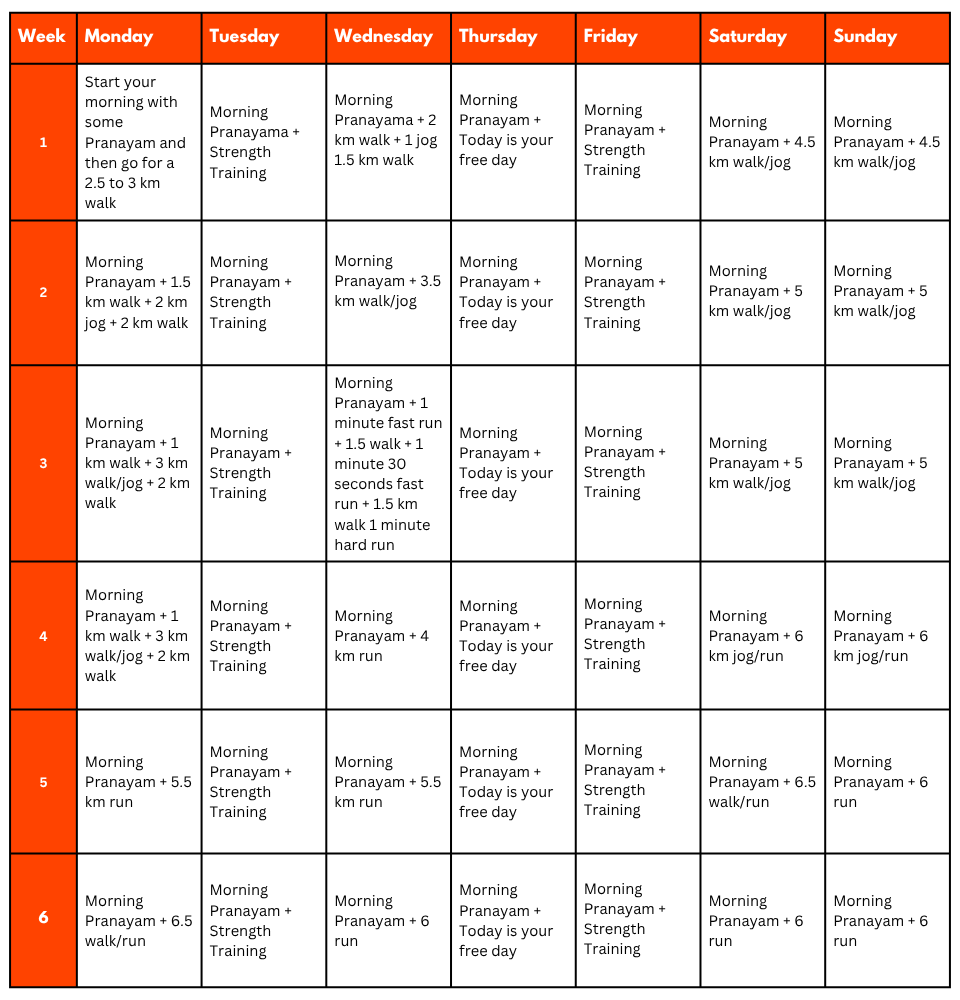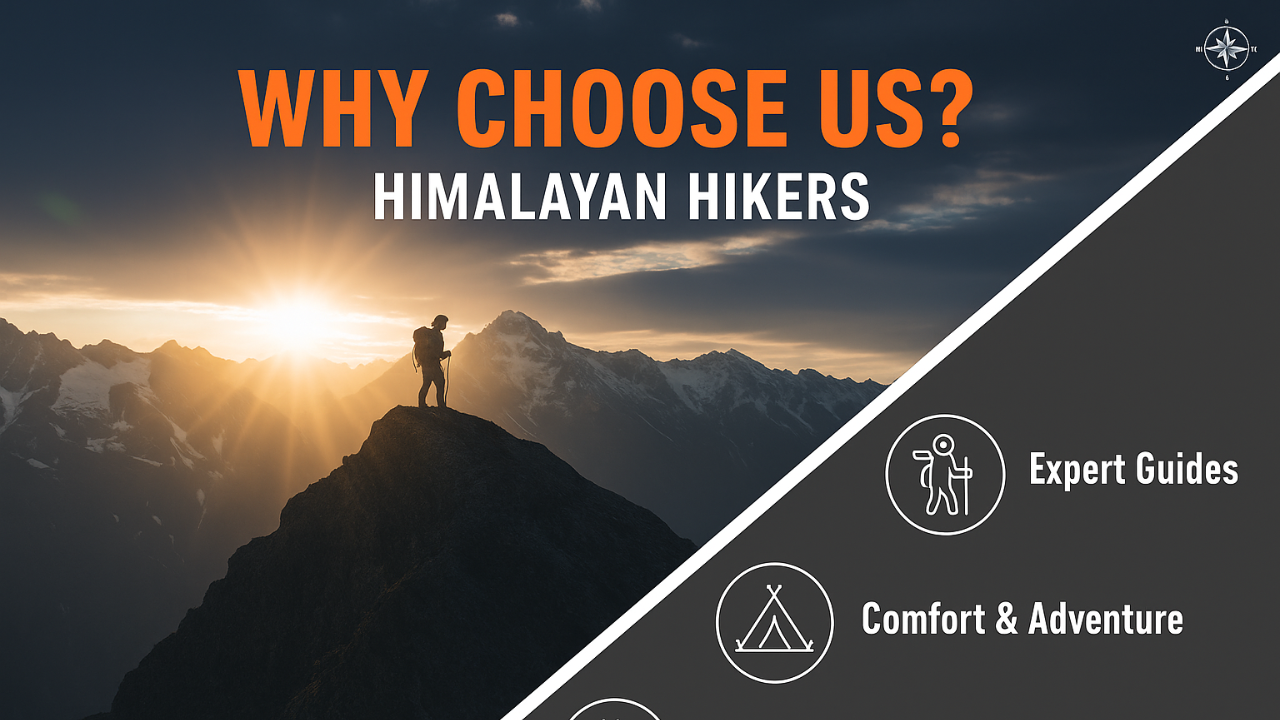The trek to Ali Bedni Bugyal usually starts from a village called Lohajung, which is situated in the Chamoli district of Uttarakhand. From Lohajung, the trail ascends through forests of oak and rhododendron, gradually leading to the mesmerizing Ali Bugyal meadow. The trek further continues to Bedni Bugyal, another stunning meadow with panoramic views of the Himalayan peaks.
The entire trek usually takes around 4-5 days to complete, depending on your pace and the itinerary chosen. It is considered a moderate-level trek, suitable for beginners as well as experienced trekkers. The best time to undertake the Ali Bedni Bugyal trek is during the summer months from May to June and the autumn months from September to October when the weather is pleasant and the meadows are in full bloom.
During the trek, you can witness the vibrant local culture, interact with the villagers, and stay in campsites or guesthouses along the route. It is important to be well-prepared for the trek, including carrying appropriate clothing, trekking gear, and supplies. It is also advisable to trek with a local guide or join a reputable trekking organization to ensure safety and proper guidance throughout the journey.
The Ali Bedni Bugyal trek offers several highlights that make it a memorable experience. Here are some of the key highlights of the trek:
- Scenic Beauty: The trek takes you through picturesque landscapes, dense forests, and charming villages, offering breathtaking views of the snow-capped Himalayan peaks.
- Flora and Fauna: The trek provides an opportunity to explore the rich biodiversity of the region. As you pass through the forests, you can spot various species of Himalayan flora, including oak, rhododendron, and coniferous trees. Wildlife enthusiasts may also come across Himalayan birds and occasionally spot animals like musk deer and Himalayan langurs.
- Cultural Experience: The trek allows you to immerse yourself in the local culture of the Garhwal region. You can interact with the friendly villagers, learn about their traditional lifestyle, and witness their unique customs and practices. The villages of Lohajung, Wan, and Bedni Bugyal provide insights into the rural life of the region.
- Ali Bugyal and Bedni Bugyal Meadows: The highlight of the trek is undoubtedly the Ali Bugyal and Bedni Bugyal meadows. These vast alpine meadows, surrounded by towering peaks, offer stunning panoramic views. The sight of the sun rising or setting over the meadows is truly awe-inspiring.
- Bedni Kund: At Bedni Bugyal, there is a small lake called Bedni Kund, which holds religious significance. It is believed to be the source of the river Neel Ganga and is considered sacred by the locals. Many trekkers take a dip in the holy waters of the lake.
- Thrilling Camping Experience: Throughout the trek, you get to camp in serene locations, surrounded by the beauty of nature. Camping under the starry skies and waking up to breathtaking mountain views is a highlight for many trekkers.
- Panoramic Mountain Views: The trek offers stunning views of some prominent Himalayan peaks like Trishul, Nanda Ghunti, Chaukhamba, Neelkanth, and Hathi Parbat. These majestic peaks create a dramatic backdrop against the meadows and valleys.
These highlights combine to create a memorable and enriching experience for trekkers undertaking the Ali Bedni Bugyal trek in the Uttarakhand Himalayas.
Here are some of the prominent peaks that can be seen along the trek:
- Trishul (7,120 meters): Trishul is a stunning mountain with three distinct peaks that resemble a trident. It is one of the prominent peaks visible during the trek.
- Nanda Ghunti (6,309 meters): Nanda Ghunti is a beautiful mountain that stands tall in the Garhwal Himalayas. Its snow-covered peak adds to the scenic beauty of the region.
- Chaukhamba (7,138 meters): Chaukhamba is a group of four peaks that form a spectacular sight during the trek. Its name translates to “four pillars” in Hindi.
- Neelkanth (6,596 meters): Neelkanth, also known as the “Garhwal Queen,” is a prominent peak with a distinctive conical shape. It offers a majestic backdrop to the meadows of Ali Bedni and Bedni Bugyal.
- Hathi Parbat (6,727 meters): Hathi Parbat, meaning “Elephant Peak,” is named after its resemblance to an elephant. Its massive size and distinctive shape make it a notable sight along the trek.
Ali Bedni Bugyal Trek Guide
Day 2 : Trek from Lohajung to Didina (7 kilometers, 4-5 hours)
Day 3 : Trek from Didina to Ali Bugyal (8 kilometers, 5-6 hours)
Day 4 : Trek from Ali Bugyal to Bedni Bugyal /Gehroli Patal camp (10 kilometers, 6-7 hours
Day 5: Trek from Gehroli Patal to Wan (12 kilometers, 4-5 hours) same day drve to Lohajung base camp overnight stay Hotel
Day 6 : Drive Lohajung to Rishikesh (7-8 hours by road)
Day 1: Pickup to you from Rishikesh to Lohajung (7-8 hours by road)
On the first day of the Ali Bedni Bugyal trek, when you are picked up from Rishikesh and driven to Lohajung, you will encounter several scenic views along the way. Here are some highlights:
- Devprayag: Devprayag is a picturesque town located at the confluence of the Alaknanda and Bhagirathi rivers, which merge to form the holy river Ganges. The view of the confluence and the surrounding hills is breathtaking.
- Rudraprayag: Rudraprayag is another town situated at the confluence of the Alaknanda and Mandakini rivers. The river view and the backdrop of the mountains provide a stunning sight.
- Chamoli District: As you continue your journey, you’ll pass through Chamoli District, known for its beautiful landscapes and panoramic views of the Himalayas. The district is blessed with lush green valleys, terraced fields, and cascading waterfalls.
- Nanda Devi Temple: On the way, you might get a glimpse of the Nanda Devi Temple located in the village of Karanprayag. The temple is dedicated to Goddess Nanda Devi and is an important pilgrimage site for locals.
- Village Life: Throughout the drive, you will pass through charming mountain villages, where you can observe the local culture, traditional houses, and farming practices. It’s an opportunity to witness the rural lifestyle of the region.
Day 2 : Trek from Lohajung to Didina (7 kilometers, 4-5 hours)
The trek from Lohajung to Didina is a relatively short distance, but it offers beautiful views of the surrounding landscapes. Here are some of the views you can expect during this portion of the trek:
- Lush Forests: The trail initially passes through dense forests of oak, rhododendron, and other alpine trees. The forested sections provide a serene and peaceful ambiance as you hike amidst the greenery.
- River Crossing: During the trek, you may come across a river that needs to be crossed. The sight of the gushing river and the sound of the flowing water adds to the natural beauty of the surroundings.
- Panoramic Valley Views: As you ascend, you’ll be treated to panoramic views of the valley below. The vantage points along the trail offer glimpses of the distant mountains, rolling hills, and terraced fields in the valley.
- Charming Villages: Along the way, you may pass through or encounter small mountain villages. These villages provide an opportunity to witness the local lifestyle, traditional houses, and farming practices. The views of the villages nestled amidst the mountains are picturesque.
- Flora and Fauna: Keep an eye out for the diverse flora and fauna that thrive in this region. You may spot vibrant wildflowers, colorful birds, and if you’re lucky, some wildlife like mountain goats or deer.
Day 3 : Trek from Didina to Ali Bugyal (8 kilometers, 5-6 hours)
The trek from Didina to Ali Bugyal offers breathtaking views of the natural beauty surrounding the region. Here are some of the views you can expect during this portion of the trek:
- Forested Path: As you begin the trek from Didina, you will traverse through a forested path. The trail winds its way through dense oak and rhododendron forests, providing a serene and refreshing atmosphere. The lush greenery and the play of sunlight filtering through the trees create a picturesque setting.
- Mountain Streams: Along the way, you may come across small mountain streams or rivulets. These pristine streams add to the tranquility of the surroundings and offer opportunities for refreshing breaks.
- Valley Views: As you ascend further, you will be rewarded with panoramic views of the surrounding valleys. You’ll witness the undulating landscapes, terraced fields, and distant hills, creating a picturesque backdrop for your trek.
- Alpine Meadows: As you approach Ali Bugyal, you will enter the vast expanse of the alpine meadows. Ali Bugyal is known for its expansive grasslands, carpeted with greenery and dotted with wildflowers during the summer months. The wide-open meadows surrounded by towering mountains offer stunning panoramic views.
- Himalayan Peaks: Throughout the trek, you’ll catch glimpses of the majestic Himalayan peaks in the distance. On a clear day, you may see peaks like Trishul, Nanda Ghunti, Chaukhamba, Neelkanth, and more. These snow-capped peaks serve as a breathtaking backdrop to the entire trek.
Day 4 : Trek from Ali Bugyal to Bedni Bugyal /Gehroli Patal camp (10 kilometers, 6-7 hours
The trek from Ali Bugyal to Bedni Bugyal offers stunning views as you traverse through the high-altitude meadows. Here are some of the viewpoints and scenic highlights you can expect during this part of the trek:
- Ali Bugyal: As you start from Ali Bugyal, you’ll have mesmerizing views of the expansive alpine meadow itself. The vast green carpet of grass stretching out before you, with the backdrop of the surrounding mountains, is a sight to behold.
- Panoramic Mountain Views: The trail from Ali Bugyal to Bedni Bugyal provides panoramic views of the Himalayan peaks. On a clear day, you can enjoy vistas of majestic mountains such as Trishul, Nanda Ghunti, Chaukhamba, Neelkanth, and more. The towering peaks against the blue sky create a breathtaking scenery.
- Bedni Kund: As you approach Bedni Bugyal, you’ll come across the sacred Bedni Kund, a small lake nestled amidst the meadows. The still waters of the lake reflect the surrounding mountains, adding to the enchanting ambiance.
- Bedni Bugyal: Upon reaching Bedni Bugyal, you’ll be treated to the stunning views of the expansive grassland surrounded by the Himalayan peaks. The serene and picturesque setting of Bedni Bugyal makes it a perfect spot to relax and soak in the natural beauty.
- Sunset and Sunrise: Bedni Bugyal is known for its captivating sunrise and sunset views. The golden hues painting the mountains and meadows during these times create a magical atmosphere. Watching the sun rise or set over the majestic Himalayas is a memorable experience.
Day 5: Trek from Gehroli Patal to Wan (12 kilometers, 4-5 hours) same day drve to Lohajung base camp overnight stay Hotel
The trek from Bedni Bugyal to Wan offers scenic views as you descend from the high-altitude meadows towards the village of Wan. Here are some viewpoints and highlights you can expect during this part of the trek:
- Bedni Bugyal: As you start from Bedni Bugyal, take a moment to admire the panoramic views of the meadow and the surrounding Himalayan peaks. The vast expanse of greenery and the backdrop of snow-capped mountains create a stunning sight.
- Forested Path: The trail from Bedni Bugyal to Wan takes you through a forested path. You’ll walk amidst the alpine trees, including oak and rhododendron, which provide shade and a refreshing atmosphere. The forested sections offer a tranquil and serene experience.
- Village Landscapes: As you descend further, you’ll catch glimpses of the charming villages in the valley. The terraced fields, traditional houses, and the rural landscape present a picturesque view of the local way of life.
- River Streams: Along the way, you may come across small streams or rivulets as you cross over bridges. These streams add to the natural beauty of the surroundings and provide a refreshing element to your trek.
- Valley Views: As you approach Wan, you’ll be treated to panoramic views of the valley below. The rolling hills, meandering rivers, and distant mountain ranges create a captivating vista.
- Wan Village: As you reach Wan, you’ll have a view of the quaint village nestled amidst the mountains. The village showcases the traditional architecture and the lifestyle of the local residents.
Day 6 : Drive Lohajung to Rishikesh (7-8 hours by road)
During the drive from Lohajung to Rishikesh, you will have the opportunity to enjoy the scenic beauty of the Uttarakhand region. Here are some possible viewpoints and highlights you might encounter on the return journey:
- Chamoli District: As you travel through Chamoli District, you’ll be surrounded by breathtaking landscapes, including lush green valleys, terraced fields, and picturesque villages. The district is known for its natural beauty and offers stunning views of the Himalayas.
- River Confluences: En route, you will pass through towns located at the confluence of rivers. For example, you might see Rudraprayag, where the Alaknanda and Mandakini rivers merge. These confluences provide beautiful views of the rivers and the surrounding mountains.
- Devprayag: Devprayag, the confluence of the Alaknanda and Bhagirathi rivers, offers a scenic view of the merging rivers. The sight of the clear blue waters coming together is truly captivating.
- Himalayan Peaks: If the weather is clear, you may get glimpses of the majestic Himalayan peaks during parts of the journey. The towering snow-capped peaks, including Nanda Devi and Trishul, create a stunning backdrop to the scenic landscapes.
- Waterfalls and Gorges: As you drive through the mountainous terrain, you may come across waterfalls and gorges along the way. These natural features add to the beauty of the surroundings and provide refreshing views.
- Village Life: The route back to Rishikesh will take you through several charming mountain villages. Observing the local culture, traditional houses, and daily activities of the villagers can be a fascinating experience.
Please note that the specific views may vary depending on the weather conditions, time of year, and the exact route taken. The mentioned highlights are some of the common sights that travelers often enjoy during the drive from Lohajung to Rishikesh.
The best time to visit Ali Bedni Bugyal trek
Here’s a breakdown of these seasons:
- Summer (May to June): This is the ideal time for trekking in Ali Bedni Bugyal as the weather is generally pleasant with clear skies. The temperatures during this period range from mild to cool, making it comfortable for trekking. The meadows are in full bloom, adorned with colorful flowers, creating a vibrant and picturesque landscape. However, keep in mind that this is also the peak season, so expect more crowds on the trail.
- Autumn (September to October): Another excellent time to visit is during the autumn months. The weather is cool and stable, offering clear views of the surrounding peaks. The monsoon season would have ended by September, so the trail is relatively dry and safe. The foliage starts changing colors, creating a mesmerizing and scenic experience. The number of trekkers may be relatively lower during this season compared to summer.
It is important to note that the weather in the mountains can be unpredictable, and conditions can vary. Therefore, it is always advisable to check the weather forecast before planning your trek and to be prepared for sudden changes in weather, especially during the monsoon season and winter months.
Additionally, it is recommended to avoid trekking during the winter season (November to April) due to heavy snowfall and extreme cold temperatures, which can make the trek challenging and risky.
- By Air: The nearest airport to Rishikesh is the Jolly Grant Airport in Dehradun, which is approximately 20 kilometers away. From the airport, you can hire a taxi or take a pre-paid taxi to Rishikesh.
- By Train: Rishikesh has its own railway station called Rishikesh Railway Station (IR station code: RKSH). It is well-connected to major cities in India. From the railway station, you can take a local taxi or an auto-rickshaw to reach the city center.
- By Road:
- From Delhi: Rishikesh is approximately 240 kilometers away from Delhi. You can take a direct bus from Delhi to Rishikesh, which is available from the Inter-State Bus Terminus (ISBT) or hire a taxi.
- From Dehradun: Rishikesh is around 45 kilometers away from Dehradun. You can take a bus or hire a taxi from Dehradun to reach Rishikesh.
- From other nearby cities: Rishikesh is well-connected to other cities in Uttarakhand by road. You can find buses or hire taxis from cities like Haridwar, Dehradun, or Rudraprayag to reach Rishikesh.
Once you reach Rishikesh, you can plan your further journey to Lohajung, the starting point of the Ali Bedni Bugyal trek. Here are the general directions:
- By Road:
- Rishikesh to Lohajung: You can take a shared taxi or bus from Rishikesh to reach Lohajung, which is approximately 210 kilometers away. The journey takes around 10-12 hours, depending on the road conditions and traffic. It is advisable to hire a private taxi or join a pre-arranged group for more convenience and flexibility.
- By Trek:
- Alternatively, you can undertake a multi-day trek from Rishikesh to Lohajung via Bedni Bugyal. This route is longer and more challenging but offers a unique trekking experience.

Mandatory Documents
Original and photocopy of government photo identity card- (Aadhar Card, Driving License, Voters ID, etc,)
Passport and Visa important to foreigners
Medical Certificate (First part should be filled by the Doctor and Second part by the Trekker)
Declaration Certificates
Note: – Many trekkers commit the same mistake of carrying unnecessary items on a trek which only makes the backpack heavy. It is important to know the right items to carry. It differs from season to season if you are trekking in summers then carry less layers of warm clothing and if you are trekking in winters carry enough layers to protect yourself against chilly cold.
Necessary Items for trekkers

Basic Trekking Gears

The Clothes You Should Bring On Satopanth Expedition

Head Gears

Foot Gears

Personal Care Essentials

Carry a Personal Medical Kit


Are you Looking for Trekking Equipment on Rent?
If any trekker requires trekking equipment on rent, Himalayan Hikers offers the best-quality gear available for rental. Many individuals are in need of such equipment, and renting provides a cost-effective solution, allowing them to access high-quality gear at an affordable price without the need for a significant investment for short-term use.

Trek Equipment You can book directly on first day at the Base Camp.
Note:-
Please take all medicines only when prescribed by the doctor. In case you face any problem during your trek,
discuss and take advice from the Professional guide.
The Trek is one of the most popular treks in Uttarakhand, requiring both physical preparation and mental readiness. Although it is categorized as a moderate trek, reaches an elevation of over 12,720 feet and traverses remote Himalayan terrain, which can be physically and mentally challenging. Here's how you can prepare yourself for a safe and successful accomplishment of the Trek:
Physical Fitness
Building a good fitness base is essential for every trekker. The Trek itinerary involves 5 to 6 hours of walking every day. Though the trails are well-marked, they are often bumpy and include steep uphill sections, which may affect your stamina. You can overcome your physical limitation with a 6-week training program that you can begin about 2 months before your Trek. Your 6-week fitness routine should include

Pro Tip: If you have time, you can skip the Sunday training and go for a long-distance walk or mini day-hike (7–10 km) with a loaded backpack to simulate real trekking conditions. A short 1-day hike around your city/town can help a lot.
Mental Preparation
Physical strength is only half the journey, the other half is mental resilience. The trail takes you through remote clearings, steep climbs, cold starry nights, and no mobile connectivity. Be prepared to:
(I) -
Detach from the digital world.
(II) -
Embrace basic mountain living (camping, toilet tents, limited electricity).
(III) -
Push through moments of fatigue, weather discomfort, or altitude effects.
Himalayan Hikers is a reputable trekking company that places a high priority on safety. Here are some of the safety measures they take to ensure the safety of their clients during the Trek:
Experienced Guides: Himalayan Hikers hires experienced and certified guides who are well-versed in the terrain, weather conditions, and local culture. These guides have first-hand knowledge of the routes and are equipped to handle any emergency situations that may arise.
Proper Gear: The company provides all the necessary gear and equipment to their clients to ensure comfort and safety during the trek.
Hygiene and Sanitation: Himalayan Hikers places great emphasis on hygiene and sanitation during the Trek. They provide clean drinking water, hand sanitizers, and toilet tents to ensure that their clients are healthy and comfortable.
Emergency Services: The company has a well-defined protocol for handling emergency situations. They have a team of trained medical professionals who are available 24/7 and can be quickly mobilized in case of an emergency.
Acclimatization: Himalayan Hikers follows a gradual acclimatization process during treks to ensure that their clients adjust to the high altitude gradually. They also monitor the health of their clients regularly and provide necessary medical attention if required.
Overall, Himalayan Hikers places a great emphasis on safety and takes all necessary measures to ensure the safety and well-being of their clients during treks.
No FAQs available for this trek.






